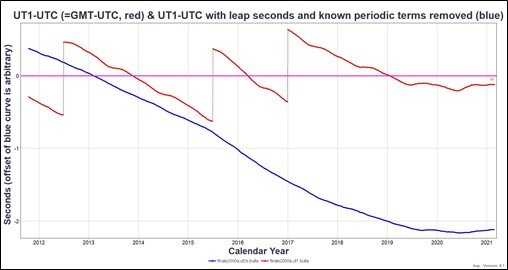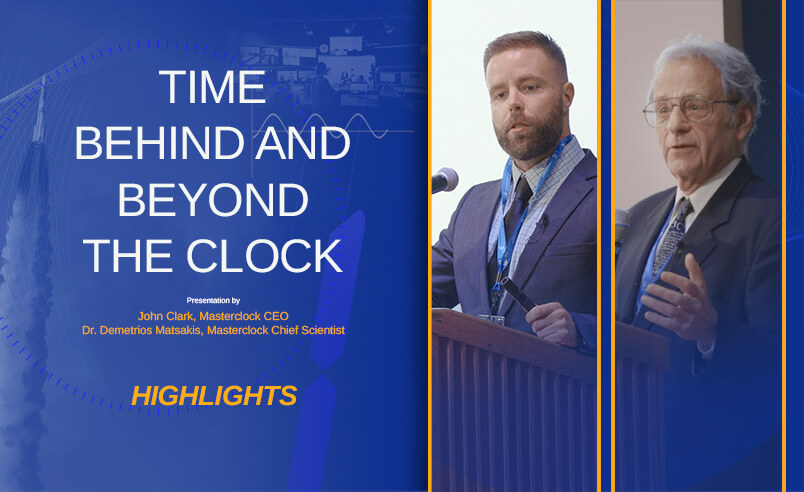A few thousand years ago, most people believed the Sun was a god who crossed the sky each day. There was even an impetuous youngster, called Icarus, who attached feathers to his arms with wax, and tried to fly up to it. It cost him his life, because the wax melted and he fell into the ocean.
By Dr. Matsakis
By the Renaissance, we had realized that the Sun was too far away to fly to. But the price of thinking it was not going around the Earth was still pretty steep. A guy called Bruno got burned at the stake, and one called Galileo got house arrest for life.
Modern society, of course, has decided that the Sun doesn’t orbit and the Earth turns. But we still pay a price for pretending it turns uniformly. That price is paid every few years, when the international timekeeping community slips in a leap second [1] and time stops, figuratively speaking. So far, fortunately, no airplane has crashed into a control tower because of it, but airport computers have gone into stasis until a human could explain things to them. And GNSS receivers have gone off to never-never land, while still others failed because there had NOT been a leap second for a while.
People wonder why even have leap seconds. The answer is that they were the joint product of Gernot Winkler, who was my predecessor at the US Naval Observatory, and Louis Essen, inventor of the cesium atomic clock. The leap second was their politically correct way to combine the precision of atomic clocks with the fact that the Earth rotated irregularly. They knew that in the long term Greenwich Mean Time, based on the Sun and stars, was falling behind the clocks because the Moon was slowing down the Earth through the tides. They also knew that sometimes the Earth sped up its rotation for a few decades before resuming its slow-down. Everybody wanted better time, but back then, navigators steered by the stars and so they needed to know GMT and not atomic time. The solution was Coordinated Universal Time (UTC).
The second would be defined so the cesium ground-state frequency was 9,192,631,770 Hz, which would have made one Earth-day last 24 hours at the rate the Earth was turning in the 1830s. Since the Earth was turning slower by 1971, leap seconds would be inserted as needed so the mean Sun, corrected for the Earth’s non-circular orbit, would continue being near the meridian at 12 o’clock, corrected for time zones and daylight time. Since then, we have added 37 leap seconds, always on June 30 or December 31. The possibility was left open that if the Earth decided to speed up enough, a second could be skipped. This is called a negative leap second.
Let’s look at some pictures of what has been going on [2]. The red curve in the image below shows how time as kept by the rotating Earth (UT1, which we can loosely call GMT) differed from UTC over the past 11 years. The jumps are leap seconds, inserted so |UT1-UTC| will always be < 0.9 seconds. You can also see some wiggles. Those are due to a combination of yearly fluctuations related to the weather and lunar tides, the strongest cycles being +/- 150 milliseconds over 19 years and +/- 30 milliseconds over one year. The blue curve has the leap seconds and those other known periodic variations removed.

You can see the Earth is certainly slowing down less and less, but has it begun to rotate faster? It might be better to look at the length-of-day, which is the negative slope of the UT1-UTC curves. We will use LOD to mean the difference between the Length of Day and 24 hours.

Here, the red curve is the actual observed LOD, with seasonal and lunar effects included. The blue curve is after removing them. To keep the curves from falling on top of each other and making a mess, I shifted the red one by 3 milliseconds for clarity. Since a shorter LOD means a faster Earth, a negative leap second will happen if the bottom curve goes below zero, and stays below zero long enough. I have drawn a circle around the recent data. It has been hovering around zero. The tiny amount of negativity shown would take about five years to accumulate 1 second, but it could easily get more negative. The LOD shortened by 2 milliseconds over 1860-1880. If it were to go down by an additional 0.5 milliseconds for 3 years, UT1-UTC would march up half a second, threatening to bring UT1-UTC above 0.9 seconds and triggering a negative leap second. Fossil records, based on markings of sea shells, tell us that the slowdown has been noticeably less since the ice ages, and this is known as Munk’s enigma. Munk’s theory is that rising sea levels work toward speeding up in the long run. It opens the possibility that the short-term changes we are seeing may be related [3].
Should we be concerned? Nobody can say, since we’ve never had a negative leap second. But there have been problems with every normal leap second insertion. Many issues have been documented, but others would never be admitted by companies or governments. So far, none have been of pandemic proportions, but databases have been messed up and commerce disrupted. And every year we get more and more dependent on computers, so once again nobody knows what to expect next time.
It’s the timekeeping community’s job to inform the public and to promulgate best practices [4]. Masterclock routinely tests its products for compatibility with positive and negative leap seconds, and I’m sure other companies do too. The bigger problem is with society as a whole. Just like there is no limit to human folly, there is no limit to what bad computer programming can do – especially since most programmers never even heard of leap seconds.
Of course it would be best to eliminate the practice of inserting leap seconds, and there has been an effort in that direction since the late 1990s. The World Radiocommunication Conference, which for historical reasons claims the authority to decide, has been putting it off meeting after meeting. If you want to know the chrono-political details, you can hear a great talk on UTC that includes it [5]. They’ll be reconsidering the question in 2023. Let us just hope that this time history does not repeat.
Footnotes
[1] The viewgraphs for a popular-level but in-depth talk I gave on Earth rotation and leap seconds, from before the dinosaur days to modern political absurdities, can be found here.
[2] More plots can be found on the web pages of the International Earth Rotation and Reference Frames Service. The corrections I applied are described here.
[3] “Reconciling past changes in Earth’s rotation with 20th century global sea-level rise: Resolving Munk’s enigma”, Mitrovica et al., Science Advances, 11 Dec 2015.
[4] Best practices, for both positive and negative leap seconds, include at least these:
a) Check the official leap second announcements. The IERS Bulletin C can be found here, and you can also use the IERS web pages to subscribe to an email notification. The notices have historically been posted five months in advance, in January and July. Alternately, NIST has it available here.
b) Design your system so that days are not assumed to last 86,400 seconds, and to recognize that one-second discontinuities can take place at the end of any month, although so far they have always been at the end of June 30 or December 31.
c) Do not compute frequency by subtracting the time offset or phase at start of one day from that of the previous day, or use the fraction of a day as a critical unit.
d) Data formats should allow for seconds labelled “60,” as opposed to just “0” through “59,” and that there could be no second labelled “59.”
e) Be sure that leap seconds are inserted/deleted at the end of a UTC day as opposed to the end of a day in local time.
f) If time is accessed via Network Time Protocol (NTP), be sure to point your clients to servers of official government laboratories and to use multiple widely-distributed backup servers. Use odd-man out error checking. If none of this is possible, recognize that some servers process leap seconds incorrectly and that it can take days for the full NTP network to settle down.
g) Make sure products you buy have been tested for leap second robustness.
h) Do a quality check after each leap second.
i) Avoid scheduling critical operations on the day of a leap second, or up to two days after one.
[5] An excellent summary of the current status of leap seconds, and UTC in general, was given to the Institute of Navigation last month by Dr. Felicitas Arias, formerly head of the BIPM’s Time and Frequency department, and it is available here.
About Dr. Demetrios Matsakis
 Dr. Demetrios Matsakis attended MIT as an undergraduate and received his PhD in physics from UC Berkeley, where he studied under the inventor of the maser and laser; and built specialized ones in order to observe interstellar dust clouds where stars are born. His first job was at the U.S. Naval Observatory, building water vapor radiometers and doing interferometry to observe quasars and galaxies at the edge of the observable universe. After developing an interest in clocks, Dr. Matsakis would spend the next 25 years working hands on with most aspects of timekeeping – from clock construction, to running the USNO’s Time Service Department, to international policy. He has published over 150 papers and counting, but gets equal enjoyment out of beta-testing his personal ensemble of Masterclock products.
Dr. Demetrios Matsakis attended MIT as an undergraduate and received his PhD in physics from UC Berkeley, where he studied under the inventor of the maser and laser; and built specialized ones in order to observe interstellar dust clouds where stars are born. His first job was at the U.S. Naval Observatory, building water vapor radiometers and doing interferometry to observe quasars and galaxies at the edge of the observable universe. After developing an interest in clocks, Dr. Matsakis would spend the next 25 years working hands on with most aspects of timekeeping – from clock construction, to running the USNO’s Time Service Department, to international policy. He has published over 150 papers and counting, but gets equal enjoyment out of beta-testing his personal ensemble of Masterclock products.

